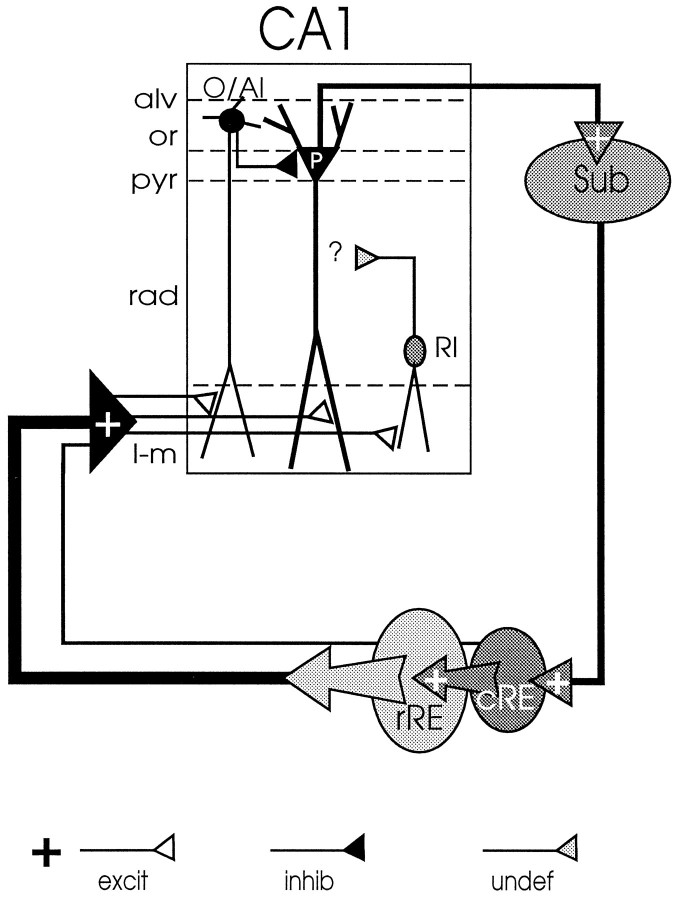Fig. 6.
Schematic representation of the RE–CA1–subiculum–RE loop. The RE–CA1 input is both monosynaptically and disynaptically organized. Monosynaptic input originates predominantly in the rRE; only a minor portion of the monosynaptic afferents arises from cRE. A dense intranucleus projection from cRE to rRE can account for the disynaptic cRE–rRE–CA1 input. In the stratum lacunosum-moleculare (l-m) of CA1, the RE axons form exclusively asymmetrical [i.e., excitatory (excit)] synapses on the apical dendrites of pyramidal cells [P; stratum pyramidale (pyr)], as well as on those of subtypes of interneurons located at the oriens (or)/alveus (alv) border [vertical oriens/alveus interneuron (O/AI)] and in the distal stratum radiatum [rad; radiatum interneuron (RI)]. Electrical stimulation of RE in vivo elicits a subthreshold depolarization in pyramidal cells and the generation of synaptic spikes in oriens/alveus and radiatum interneurons. The vertical oriens/alveus interneurons are assumed to mediate feedforward inhibition (inhib) of pyramidal cells; the axonal targets of radiatum interneurons (the latter probably containing both inhibitory and excitatory transmitters [undefined (undef); see Discussion], and thereby the role these interneurons play in the local circuit of CA1 awaits further investigation. Major output of CA1 is known to be transmitted to the subiculum (Sub), which, in turn, projects back to cRE. This suggests a closed rRE–CA1–subiculum–cRE–rRE loop that may enable RE to modulate the flow of information through CA1 depending on the output of the hippocampus.

